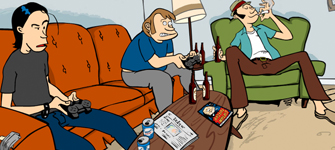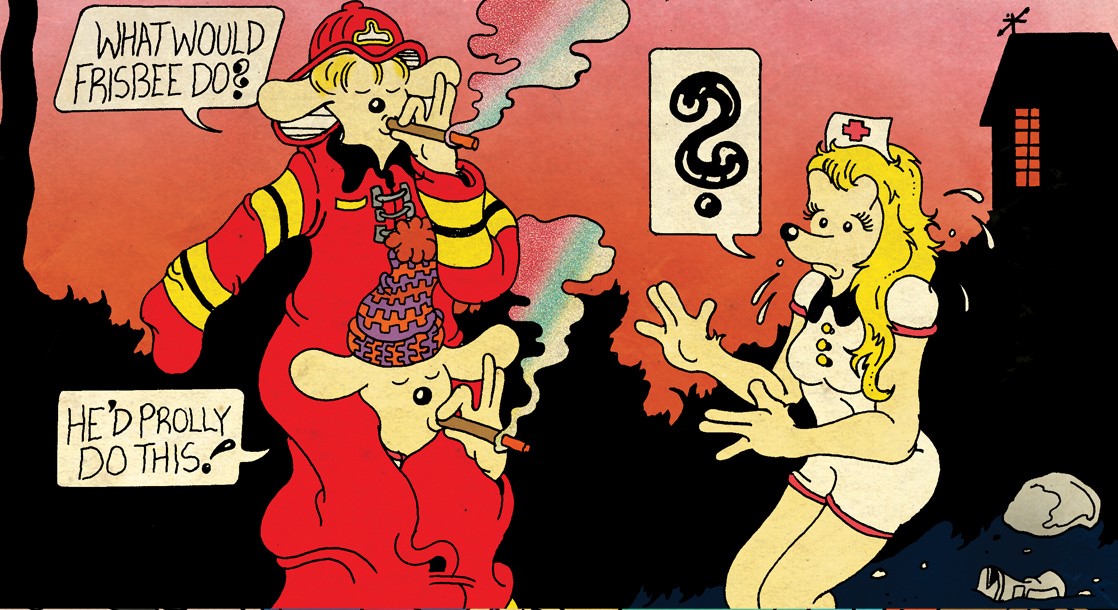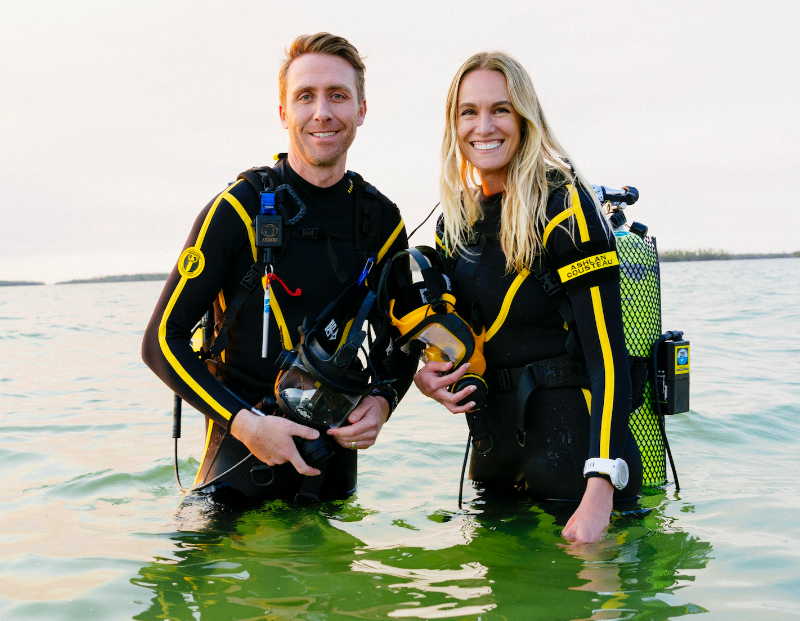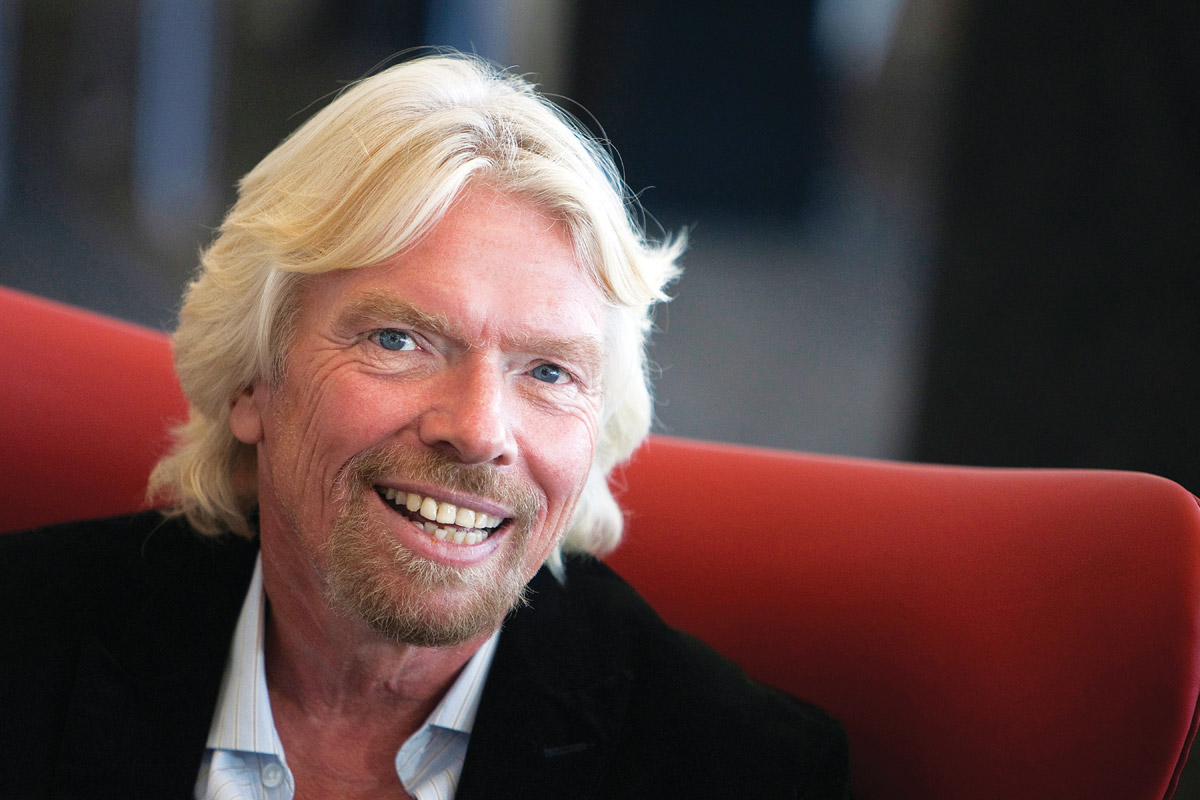Cliff Galbraith is the legendary creator and artist best known for the sci-fi independent comic book Rat Bastard and Crucial Comics. His new project is the graphic novel Unbearable, and he's been busy organizing several comic book events on the East Coast. Few are as familiar with the independent comics industry. We spoke to him to about comics, censorship, and chronic.
MERRYJANE.com: Rat Bastard has lived through several incarnations with several miniseries- Fix for a King, Vengeance Day and Small Doses. What projects are you working on now?
CG:The latest is a three part mini series titled "Small Doses." I revived the Rat Bastard series after being away from comics for twelve years. I'd had a development deal with Ron Howard's Imagine Television, and I'd moved to Los Angeles in 2000 but the show never aired because of the CBS and Viacom merger. Rat Bastard was going to be on UPN, and they had to shut down UPN because the FCC wouldn't allow them to own two networks. So I kicked around L.A. for four years. I almost took a job at Cartoon Network, but in the end, I decide to come home to New Jersey. Three years later, I contracted Lyme disease, and I was pretty miserable. I was talking to an old friend about how fucked I was, and in a reflective moment, I said, "ya know, I was never happier than when I was making comics." He looked at me and said dryly, "then why don't you make comics." All the next week I couldn't get those words out of my head. I had no excuse. I started to work on a script.
Working on something I hadn't touched in a decade was tough, especially while going through the horrors of Lyme. Somehow I got issue 1 written, drawn, and printed. I started making appearances at conventions. The response was encouraging, I was back. I loved it. But the Lyme returned, and there were several months in a row where I couldn't write or draw anything. I got better, I got worse. This went on for about three or four years. So I'm just now back to work on Small Doses.
MJ: What is Unbearable?
 Concept art for animated show Unbearable.
Concept art for animated show Unbearable.
CG: My wife used to be a bartender in New Brunswick, NJ throughout most of the 90s. This was before she was even my girlfriend. She'd get all kinds coming into her bar, including me. New Brunswick had a great indie music and art scene back then. There were a lot of dreamers, grifters, college students, dope addicts, musicians, punks, and losers. We'd talked a lot about doing a story based on our days in New Brunswick. But the more we worked on it, the more the characters became too much like people we knew. I didn't want anyone to think I was mocking them, so I made the biggest loser in the story a failed comic creator named Ben Freeman. Ben is me at my worst. He and his friends are five guys who refuse to grow up. They drink and drug and play video games, care more about comic books and film than planning for their future. They're like a lot of American men who haven't given up, but aren't really trying very hard. I was originally developing Unbearable as a pilot for animation, but I found I liked working on it as a comic. With my improved health, I'll be cranking out more issues very soon.
MJ: Thanks to a 1954 work entitled “Seduction of the Innocent”, by Dr. Frederic Wertham, censorship took on another level during the 50's. Wertham testified before the US Senate, claiming that comic book novels cause crime. What do you think were the prime motivations for the creation of the Comics Code?
CG: What's behind all behavior like that? Hysteria. That, and there were some pretty violent comics on the racks back then that kids had access to. Comics were originally called funny books. Most parents just associated comic books with funny animals or Archie and didn't differentiate between EC and Little Lulu until they took a closer look. There's always going to be some uptight crusader who's going to try to tell us how to live. It's much like the self-appointed moral police who've tried to keep marijuana illegal.
MJ: Hippie comics were America's first positive exposure to cannabis, predating High Times. Have independent comics always been a portal to the underground?
CG: Oh, you mean the underground comix, like Zap? In retrospect, I don't recall them being entirely positive. When I was in my teens I thought the art and the stories were cool. There was a good amount of getting high and fucking in those books. But looking at those books now, the people in those comix were pretty fucked up. They were strung out, they were paranoid. I don't think Robert Crumb liked hippies even though he was part of the culture and documenting or commenting on the lifestyle. I don't think Robert Williams was a hippie either, he was more of a hot rodder and biker kinda guy. Rick Griffin had some pretty trippy stuff, but it wasn't a place you'd want to dwell in for a long period of time. Most of the comix were about how fucked up life was.
MJ: When did you become involved with the East Coast Comicon?
CG: I never planned on being a promoter. Back in 2011, I dropped into a record fair old friends to see some old friends who were selling vinyl at a small rock club a block from the beach in Asbury Park. I was hanging out, and I notice somebody flipping through a white box full of records. Then he goes over and flips through another box. I kept thinking that's what comic collectors do, too! I looked around the room at all the table and then went over to the manager of the club and said, "Hey, Jenn, how many exhibitor tables does this place hold?" She looked around counted about 30. I asked her if I could throw a little comic con at her bar. Nine months later I hosted the first Asbury Park Comicon.
 MAD Magazine's Al Jaffee and comic creator turned promoter Cliff Galbraith
MAD Magazine's Al Jaffee and comic creator turned promoter Cliff Galbraith
CG: It grew it from that small venue in 2012 to the Asbury Park Convention Hall with 80 exhibitors in 2013. I brought in legendary MAD Magazine artist Al Jaffee. We also had Wolverine co-creator, Herb Trimpe, Ren & Stimpy Show co-creator Bob Camp, Batman movie producer Michael Uslan, underground comix artist and publisher Jay Lynch, Ramones album cover artist John Holmstrom (and former Executive Editor of High Times). The next year I made it a two-day event at the neighboring Berkeley Hotel with 180 exhibitors. But the hotel wanted double the rent for 2015, so I moved to the Meadowlands Exposition Center just outside of NYC and renamed the show East Coast Comicon. I've also just launched a sci-fi /horror/comics show called Monsters and Robots.
I believe the unique thing about my conventions is I bring a comic creator's perspective to running a convention. My guests know I'm one of them. Many are my friends. Some I've known for over twenty years.
MJ: Rat Bastard explored complex adult themes such as hate crimes, drug addiction and consumerism. One time, you were interviewed by Matt Pinfield on MTV. As an artist in the mid-90's, do you feel like you were pushing the boundaries?
CG: In the late 70s there was insane stuff like Heavy Metal Magazine and Judge Dredd. There were a lot of incredible comics in the 80s like Alan Moore's Swamp Thing, Killing Joke and Watchmen, Maus, Contract With God, Cerebus, Teenage Mutant Ninja Turtles, Love & Rockets, Raw, Claremont and Byrne's Uncanny X-Men, Frank Miller's The Dark Night Returns, Batman: Year One and Daredevil, Flaming Carrot, Yummy Fur, American Splendor—comics were all over the map. From grim to humor, but a lot of it was social commentary.
I don't believe I was pushing boundaries, as much as trying to carry the torch of comic creators who wanted to entertain, but wanted readers to think. I also felt that independence was important, and I wanted to be like Eastman and Laird with their Ninja Turtles or Dave Sims with Cerberus. I knew about how guys like Jack Kirby, who co-created most of the original Marvel characters had been fucked over by Marvel and Siegel and Shuster were screwed by DC on their creation of Superman. I wanted to do what I wanted to do and own what I created. There was a huge D.I.Y. movement in the punk scene, and I felt l was just as much a part of that as comics.
The stories I was trying to tell came out of my frustration with the behavior of pharmaceutical companies, the healthcare system, overpopulation, race relations, the environment, government indifference, corruption—all that fun stuff.
MJ: You successfully predicted the plight of designer drugs (i.e. spice and bath salts) and their horrible consequences with the introduction of 'karmaceuticals' in the miniseries 'Fix for a King'. What do you think of the dangerous, colorful alternatives that are widely available today?
CG: Well, opioids are wildly over-prescribed and a ridiculous percentage of the kids in America are fed Ritalin for the crime of being children. People feel trapped, they feel fucked, and they want to escape. Americans consume a disproportionate amount of the drugs in this world, legal or illegal, compared to any other country. Everyone's trying to take the edge off, but the edge has been gnawed off long ago—it's more of an open wound.
Cliff Galbraith talks about cannabis and cannabis decriminalization in Part II of MERRY JANE's exclusive interview.











